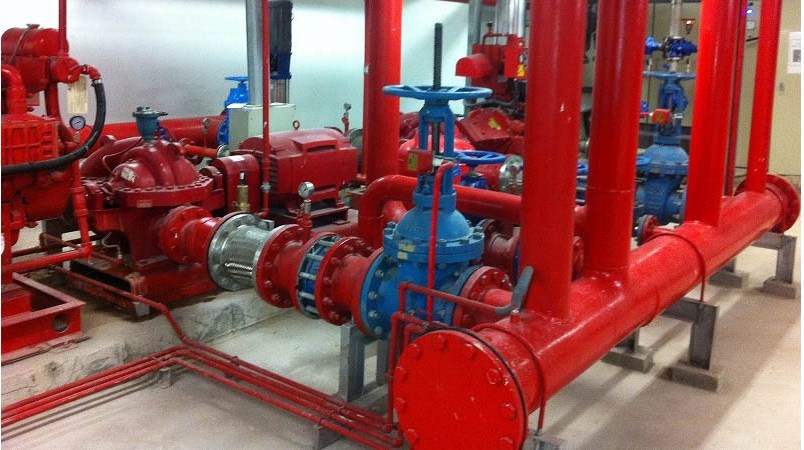Hydrant System
Fire hydrant pump systems (also known as fire pumps, hydrant boosters, fire water pumps) are high pressure water pumps designed to increase the fire fighting capacity of a building by boosting the pressure in the hydrant service when mains is not enough, or when tank fed. They can also be used in water transfer and irrigation applications.
Fire hydrant systems require periodic inspections, tests and survey to determine the system is operating and is maintained in a state that enables it to fulfil its purpose. Australian Standard AS1851 sets out the requirements for the maintenance and Australian Standard AS2419 sets out the minimum requirements for the operation of the operation of the system.
Here are Some Benefits of Hydrant System :
Available water supply and storage :– this can be from street main water pipes, a static water tank or a dam. There should be some form of automatic replenishment of any water that is used, evaporates or leaks. Consider the capacity of the water supply and whether it would be adequate to address a large fire.
Valves and connecting pipes :– the pipes and valves should allow water to flow from the water reservoir to the hydrant area without restrictions. The size of the pipes and valves should be determined based on the water supply requirements and a hydraulic analysis along with Australian Standards guidelines from AS2419.
Fire Brigade Booster :– this assembly will allow a quick and easy connection for the fire brigade equipment to pump additional water into the hydrant. In normal installations the booster is located in a cabinet and notes any pressure specifications in accordance with the fire hydrant system.
Booster Pumpset :– this piece of equipment can be used where there are hydraulic limitations and additional pressure is needed to deliver adequate water supply. The pumpset can be an electric motor or a diesel engine, depending on the requirements for the location.
Hydrant :– this is the part of the system that connects fire hoses to the water supply and has a valve to turn the water on or off when needed. The location of the hydrants should be determined based on Australian Standard AS2419, which will specify easily accessible locations to attack any fires quickly.
Fire Hose :– depending on the building design and hydrant accessibility, there could be some situations that require a layflat fire hose to be placed near the hydrant. This will allow quick connectivity and extended reach if needed for a fire emergency.
Block Plan :– located in the booster cabinet, pump room and fire control room should be a block plan diagram that clearly illustrates the locations of fire hydrants, water supplies, and other equipment along with capacities where applicable. Other key information such as year of installation, contractor names and other items are also included in the block plan.
